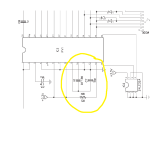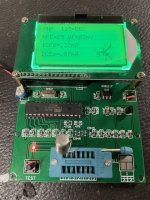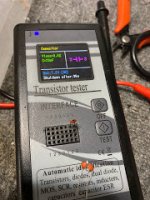You are using an out of date browser. It may not display this or other websites correctly.
You should upgrade or use an alternative browser.
You should upgrade or use an alternative browser.
Arachnid part sub question
- Thread starter swelchy
- Start date
carlinb17
Well-known member
You could also put two 30pfs in series to create your 15pf
 www.digikey.com
www.digikey.com
Conversion Calculator Series and Parallel Capacitor | DigiKey
Calculate the total series and parallel capacitance of a circuit using DigiKey's Series and Parallel Capacitor calculator.
swelchy
Well-known member
HMM. I have never done that... going to look that up and see what it looks like!You could also put two 30pfs in series to create your 15pf
Conversion Calculator Series and Parallel Capacitor | DigiKey
Calculate the total series and parallel capacitance of a circuit using DigiKey's Series and Parallel Capacitor calculator.www.digikey.com
swelchy
Well-known member
OK.. So what am I doing wrong? I've tried soldering the legs of two ceramic capacitors at 30p together and test them on my tester an I get no reading... tried with ceramic and the monolithic ones too.... tried several... and tested each one before soldering for value.. solder them and then it reads error...


fig
Village Idiot
This li’l guy?Very few DMMs can measure capacitance accurately below 1nF.
I use a little cheap $40 Amazon capacitance meter for low-value caps. Everyone likes to make fun of me about it.
(Just wait, the pic will show up shortly, I guarantee)

Last edited:
fig
Village Idiot
Perhaps 30p is the bottom rangeI'm using a cheapo meter as well.. it will show the 30p and if I put two caps in there parallel they will double the value.... but when I put them in series it shows an error or no reading.....
Another way to confirm it is to measure a 100pF cap (to see how far off 100 it is) and measure that in parallel with the “two 30pF series contraption from post #5” …much like you did with the two 30’s to get 60pF.
Then just subtract 100 (or whatever the 100pF cap measured).
I use that dual-cap method when measuring low-value caps.
Then just subtract 100 (or whatever the 100pF cap measured).
I use that dual-cap method when measuring low-value caps.
swelchy
Well-known member
great advice! thanksAnother way to confirm it is to measure a 100pF cap (to see how far off 100 it is) and measure that in parallel with the “two 30pF series contraption from post #5” …much like you did with the two 30’s to get 60pF.
Then just subtract 100 (or whatever the 100pF cap measured).
I use that dual-cap method when measuring low-value caps.
Chuck D. Bones
Circuit Wizard
Next time just use the right capacitor. XTAL oscillators are finicky and kludging them is a bad idea. Disk ceramic caps are unreliable and I avoid them like the plague (whichever plague is going around these days).
swelchy
Well-known member
Noted…. I went ahead and used them in series and it worked out great… Going to order some better caps and a better range of values on my next stock up..Next time just use the right capacitor. XTAL oscillators are finicky and kludging them is a bad idea. Disk ceramic caps are unreliable and I avoid them like the plague (whichever plague is going around these days).
Chuck D. Bones
Circuit Wizard
Silver mica is recommended. You can find 'em on eBay. Best bet is to buy a selection.
Similar threads
- Replies
- 2
- Views
- 350




